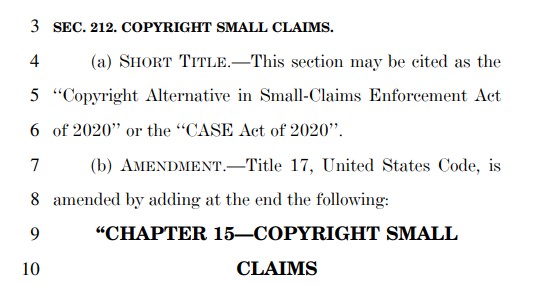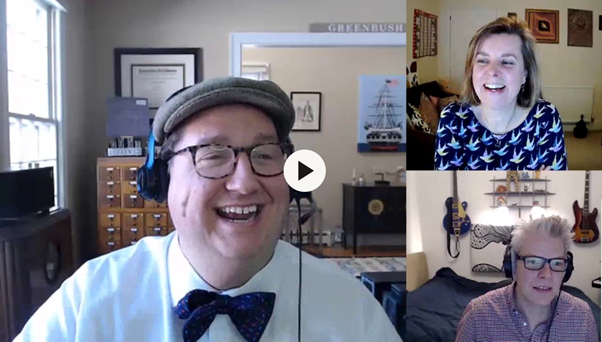Our final day of the 9th Annual Fair Use Week closes with an important post by Sandra Aya Enimil from Yale University, exploring the critical relationship between fair use and equitable access. – Kyle K. Courtney

Equitable Access and Fair Use
by Sandra Aya Enimil
Working in an academic library, brings many opportunities to interact with librarians, faculty, staff, and students working on amazing research and projects that have local, national, and international impact. One of the most important elements of librarianship is making sure that there is equitable access to content for people who want to use our materials for their scholarship, study, and research. In our increasingly digital world, many institutions of higher education preemptively provide web-based materials equitably to all. Some have done so in response to consent decrees.
Consent decrees (under provisions from the Americans with Disabilities Act) compel universities to create policies and procedures, and to dedicate resources to ensure that disabled members of a campus have access that is equitable to that of non-disabled members. Beyond the web, in many instances, general accessibility to library materials is done well and seamlessly. For persons with disabilities, however, it’s often not so seamless. Access is limited to certain content and sometimes has one or more steps before material becomes accessible for their needs. There is a myriad of reasons for this.
In the United States, libraries are bound under copyright law which provides a mechanism for library operations and the ability to loan and make available purchased or acquired content. For example, U.S. copyright law allows libraries, under section 108, to provide digitized copies for research and private study. Under section 121 digitized copies of published literary and musical works for persons with disabilities.
Broadly speaking, U.S. copyright law provides academic institutions with the authority to create accessible copies of in-copyright works. Academic librarians often partner with other parts of the institution: information technology, student/staff disability offices to provide support for persons with disabilities. While these partnerships are necessary to verify need and to fulfil accessibility requests for the person waiting to receive the material, it is an extra layer of bureaucracy, time, and effort that non-disabled persons do not have to manage. Additionally, section 121 only allows access for specific types of published content. Why does it matter how many steps a student/researcher with disabilities needs to take to eventually get access? It matter because it often means an extra layer of planning and a lack of serendipity in performing research.
How does fair use fit it into this environment? And how does fair use make access more equitable for persons with disabilities? There are compelling arguments that the fair use provision and Section 121 make it possible to create and distribute accessible materials to qualified users, and to retain and share accessible texts in secure repositories for use in serving future qualifying requests. There is also broad discretion to develop systems to support creating and distributing these texts in accordance with the law and their institutional capacity. Individual academic institutions can also create their own systems and workflow to address the needs of eligible persons. Or academic institutions can rely on systems like HathiTrust to provide this content. Eligible researchers can use Hathi’s search feature to access millions of volumes of works that have been digitized. The researchers do have to register to receive access, but once that happens, they may search the corpus of content freely and hopefully many of those serendipitous research moments happen.
While section 121 is narrow in scope, fair use expands the type of content that may be made accessible. Fair use allows libraries to make audio-visual works, including films accessible to researchers with audio and visual disabilities by adding captions and audio description. Other works excluded from Section 121 include unpublished works, choreography, pictorial, and sculptural works. The ability to create, distribute, and retain accessible versions of these types of content also relies on fair use. Section 107 and 121 permit an essential workflow. This workflow starts with a request from a student or researcher with a disability. It involves an accommodation specific to the needs of the requestor (remediation) and delivery of an accessible version to the researcher. Finally, it ends with deposit of the remediated version in a secure repository for appropriate future use (including future remediation) in the service of other requestors with disabilities.
Someday, these barriers to persons with disabilities won’t exist and there won’t be extra steps needed to receive the same content as non-disabled folks. But we are not there yet. And while fair use alone does not solve all the issues that make equity difficult for researchers with disabilities, it does provide an expanded scholarly universe beyond narrow provisions. And, hopefully, this provides the ability to dive down a research rabbit hole and happen upon just the thing you need.
Sandra Aya Enimil (she/her) is the Copyright Librarian and Contracting Specialist at Yale University Library. At Yale, Sandra is the Chair of the License Review Team and provides consultation on licenses of all types for the Yale Library. Sandra also provides information and resources on using copyrighted materials and assists creators in protecting their own copyright. Sandra collaborates with individuals and departments within the Yale Library and across campus. Sandra is committed to diversity, equity, and inclusion (DEI) and is interested in the intersection of DEI and intellectual property.
This blog is cross posted on the Conversations on Copyright at Yale Library Blog: https://campuspress.yale.edu/copyrightconversations/



